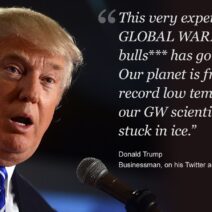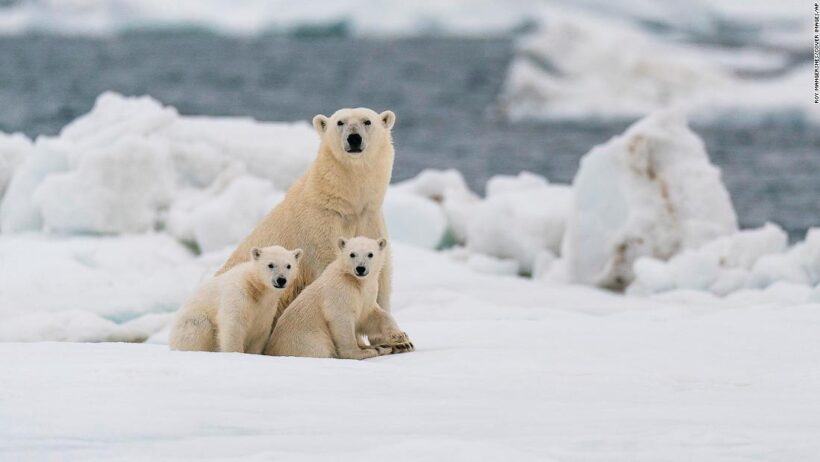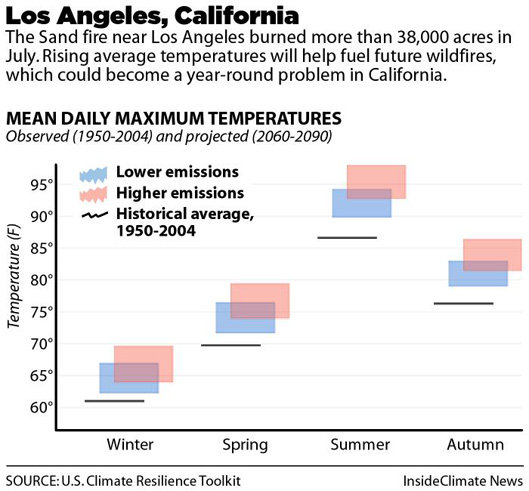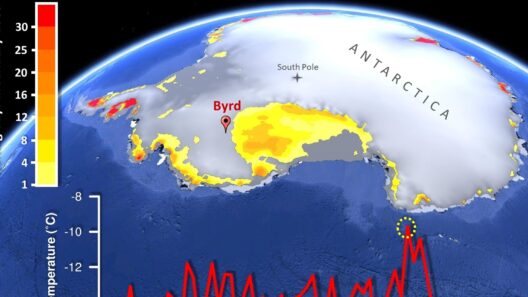Polar bears, the majestic denizens of the Arctic, epitomize the pervasive impact of climate change on our planet. These apex predators remain at the intersection of environmental sustainability and biodiversity conservation, captivating the hearts and minds of humanity. Yet, as the world warms at an alarming rate, the existence of polar bears hangs precariously in the balance, forcing a critical reevaluation of our relationship with the Earth’s climate systems.
In the pristine expanses of the Arctic, ice serves as both habitat and hunting ground for polar bears. They rely on sea ice to access their primary prey, seals. The physiological adaptations of polar bears, including their thick blubber and white fur, have evolved to withstand sub-zero temperatures. However, the receding ice due to rising global temperatures poses a dire threat to their survival. As the climate crisis escalates, the implications for polar bear populations become increasingly dire. With the ice melting earlier in the spring and forming later in the autumn, bears find themselves stranded for extended periods without the necessary resources for sustenance.
The consequences of diminishing sea ice extend beyond food scarcity. In a bid to survive, polar bears have been observed traveling further distances in search of prey. This displacement can lead to increased competition among individuals and between species, disrupting established ecosystems. Consequently, the stressors on polar bear populations compound, leading to decreased reproductive success and increased mortality rates among cubs, a critical age for population sustainability. The iconic image of polar bears sitting atop shrinking ice floes serves as a poignant symbol of this climate crisis—one that resonates deeply within the collective consciousness of humanity.
As these remarkable creatures struggle against the backdrop of climate change, the broader implications ripple throughout the Arctic ecosystem, revealing an intricate web of interdependence. Polar bears are not an isolated phenomenon; their fate is entangled with myriad species, including seals, walruses, and even krill. The decline of polar bears could trigger a cascade of ecological disruption, affecting fish populations and, by extension, the communities that depend on them. This delicate balance underscores the necessity of implementing robust conservation strategies, not only for the polar bears but for the entire Arctic biome.
The discourse surrounding polar bears often revolves around their status as an umbrella species, meaning that efforts to protect them inadvertently safeguard many other organisms within their ecosystem. By focusing on the preservation of polar bears’ habitats and promoting sustainable practices, we can enable a ripple effect of ecological security. The relationship between these bears and their ecosystem exemplifies the interconnectedness of life on Earth, compelling us to adopt a more holistic approach to conservation.
International collaboration is crucial in this endeavor. The Arctic is not the sole responsibility of any one nation; rather, it demands a global commitment to combat climate change. Partnerships among governments, non-governmental organizations, and indigenous communities can foster sustainable development while ensuring the protection of polar bears and their habitats. Indigenous knowledge, often overlooked, provides valuable insights into the management of Arctic resources and the intricate patterns of animal behavior. Such wisdom, paired with scientific research, creates a comprehensive framework for addressing the complexities of climate change.
Beyond conservation efforts, the plight of polar bears provides a clarion call for immediate action against climate change. The narrative surrounding their struggle invokes empathy and curiosity, prompting individuals to reflect on their own carbon footprints and the broader implications of their lifestyles. Renewable energy, reduced plastic consumption, and conscious consumerism represent tangible steps that individuals can take to contribute to a more sustainable future. It is not merely an environmental concern; it is a matter of ethical responsibility to ensure the continued survival of such iconic species.
As we ponder the fate of polar bears on thin ice, we must acknowledge the role of education in fostering environmental stewardship. Engaging communities in climate science, ecological principles, and the significance of biodiversity cultivates a culture of awareness and activism. Schools, universities, and community organizations can serve as platforms for disseminating knowledge, inspiring future generations to advocate for environmental justice. Every individual has the potential to be a change-maker; with the right tools and information, transformative action becomes attainable.
Moreover, art and media serve as powerful conduits for raising awareness about climate change and its impacts on polar bears. Documentaries, photography, and literature can capture the imagination, transforming abstract concepts into relatable narratives. Such representations humanize the polar bear’s plight, evoking a sense of urgency that transcends geographical boundaries. The image of a polar bear adrift on a fragment of ice resonates; it is a stark reminder of the consequences of inaction on a global scale.
Ultimately, the survival of polar bears hinges upon a collective understanding of climate change as an existential threat. The intersection of science, policy, culture, and individual action creates a tapestry of potential solutions. As stewards of the Earth, we must confront our responsibilities head-on, forging a path toward sustainability that prioritizes both human and ecological well-being. The remarkable resilience of polar bears serves as both a warning and a beacon of hope; it is a narrative that demands our attention and action in equal measure.
In conclusion, the struggle of polar bears against the encroaching realities of global warming compels us to confront the harsh truths of our climate crisis. Embracing this awareness is both a promise of a shifting perspective and an invitation to become part of a greater movement for change. The future of polar bears—and, by extension, the health of our planet—remains uncertain. Still, the potential for resilience, adaptation, and profound change lies within our grasp. It is our duty to ensure that the iconic silence of polar bears floating on thin ice does not become a monument to what once was but a catalyst for what can still be achieved.








